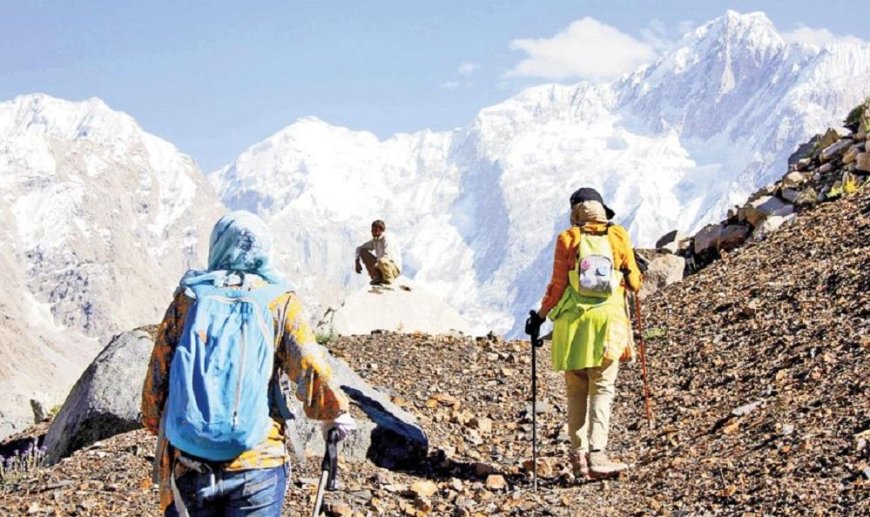Trekking - what is it and why is it worth doing it?
People who go trekking or hiking find it easy to embrace this habit as it allows them to explore different places and landscapes that they

Mixing sport with nature is one of the best ways to be physically active. People who go trekking or hiking find it easy to embrace this habit as it allows them to explore different places and landscapes that they would not otherwise be able to visit.
Do you know what trekking is? In our article today, we'll talk about what it is and what it entails. And we will also discuss how you can practice trekking on your own.
Mixing sport with nature is one of the best ways to be physically active. People who go trekking or hiking find it easy to embrace this habit as it allows them to explore different places and landscapes that they would not otherwise be able to visit.
What is trekking?
Trekking is a term commonly used to refer to an activity commonly known as hiking. In general, trekking is all about walking on natural and open paths - preferably mountain and hilly - to stay physically active and connect with nature. It's also a popular way to travel and explore new areas and places that other people haven't visited yet.
You can go trekking simply by following the established trails that you will find in many mountainous regions. But you can also do it completely on your own, without any guide other than your own sense of orientation and a compass.
You can enjoy trekking grown in mountains, forests, jungles, hills and even deserted islands if they are large enough. This type of sport is known as ecotourism. And the people who grow it are very committed to protecting the natural environment and aware of the dangers it has to constantly contend with.
What are the benefits of trekking?
Trekking, depending on the type of terrain in which you practice it, is really a very versatile form of physical activity. Some routes offer much more than just long walks.
For example, you need to overcome large differences in height, climb up or down hills, or make an effort that puts pressure on different parts of your legs.
However, no matter how difficult the path you take, trekking offers many benefits for every level of your body. The most important of them include:
- Reducing the level of stress and anxiety. Any workout can help with that, but if it's an outdoor sport, the benefits you get are even more pronounced.
- Improving (sharpening) the senses.
- Improve blood flow.
- Achieving a state of inner peace. This is something you can achieve with any type of sport or training performed in the wild, as you create a connection with nature that gives you peace of mind.
- Improving your own sense of balance. Efforts to overcome uneven, rocky ground will force you to work harder. Only thanks to this will you be able to stay on your feet and not fall down.
Muscle sculpting. While walking is not a typical muscle toning sport, doing it in mountains and rough terrain will help your muscles grow stronger and your bones will grow stronger.
Must Read: What kind of sleeping bag is best for you?
If, after exploring the possibilities offered by trekking and analyzing its benefits, you still want to start practicing it, then you will probably be interested in the tips for beginners below.
What should you pack in your trekking backpack?
Regardless of how short or long your trip is, you should take a backpack with you that contains the basic materials needed to spend a day in the mountains, jungle or anywhere else where you choose to practice this sport.
Especially if you plan to stay there for several days in a row, and even camp in the open air.
Here's what you should put in your backpack in this case:
- Depending on whether you are on the trek all day, only a few hours or a few days, evaluate the amount of water you will need and include it in your trekking kit.
- Do the same as with water. Estimate the amount needed so that you will be able to do the whole trip. We highly recommend, especially if you will be out of civilization for more than a day, that you pack your food in containers that are not too heavy to carry. Also choose foods that do not require refrigeration. Dried fruit, snacks, and energy bars are also good choices, as long as they don't contain chocolate. This last objection applies to all these situations, should it get too hot outside.
- Mobile phone and backup battery or powerbank.
- First aid kit. A small travel first aid kit can help with a minor emergency such as a cut or abrasion.
- Thermal blanket.
- Tourist stove. It will come in handy in case you need to light a fire for whatever reason, for example to heat something or to disinfect a tool.
- Knife or pocket knife.
- Rain jacket for yourself and to cover your backpack.
- In case of getting lost or bumped into any aggressive animal.
- Protection against sunlight.
- A coat or warm jacket. If you plan to spend more than one day in the mountains, be aware that it can get very cold there at night. Even if the daytime temperature is really nice.
Also, remember to put items in waterproof bags. Besides, thanks to these basic tips, you will be able to practice your trekking without any additional unnecessary incidents.
